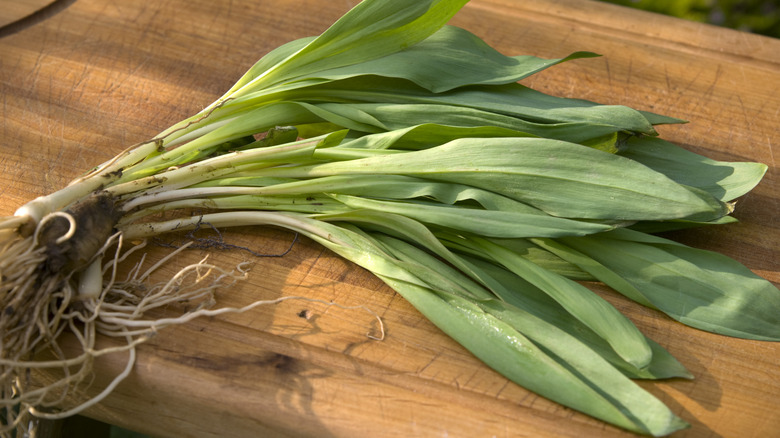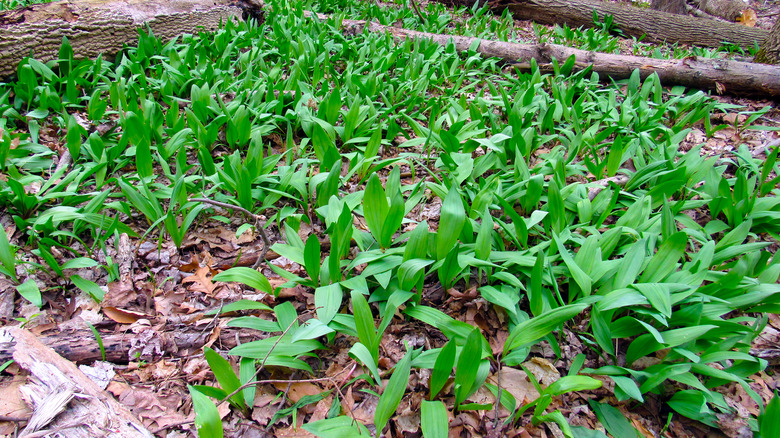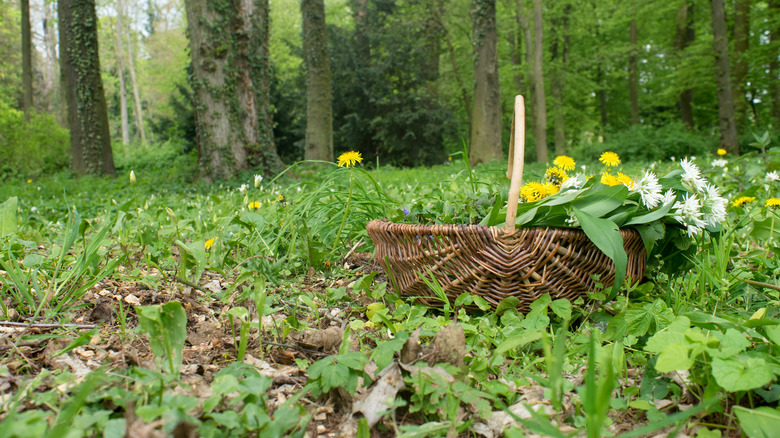It's Time To Make Ramps Untrendy Or Risk Losing Them Forever
Ramps, also known as wild leeks, have become something of a darling of the culinary world. Chefs in cities big and small are excitedly planning dishes featuring these freshly-harvested wild plants, especially between March 1 and May 30, their typical season. Enthusiastic layman foragers, too, can be found perusing the woods of the Midwest and eastern half of the United States, and all this attention for such a humble leek is leading to serious concerns of overharvesting.
That's because unlike other plants in the onion (or, to be scientific about it, Alliaceae) family, ramps can take up to 7 years to hit full maturity from seed, and a study from the University of Tennessee suggests that only a 25% harvest or less is sustainable for wild ramp populations. With that said, much of the danger in over-harvesting occurs when multiple people, unbeknownst, are harvesting 25% of ramps from a given patch. (And ramps aren't typically commercially grown — the vast majority are harvested from where they naturally occur.)
The same study also projected that at a 25% harvest rate (or an even smaller rate of 5 to 15%, as deduced by a different study) it would take the patch 22 years to recover. Think about that — a baby could be born and reach drinking age before a harvested patch of ramps recovered from just a fourth being taken. Everyone needs to calm down when it comes to ramp-seeking, or there may not be any for a long, long time.
A brief history of ramps in the U.S.
Wild ramps, along with other leeks and onions, have been used by the Indigenous people of the U.S. for thousands of years, long before the Europeans made it to these shores. They were a prized plant, since they were among the first greens to crop up in early spring, and were used for a variety of ailments, from colds and croup, to earaches, to insect bites.
Festivals dedicated to this pungent onion have been held since the early and middle parts of the 20th century, including the Waynesville Ramp Convention in North Carolina and the Cosby Ramp Festival held in Cosby, Tennessee. However, it is only in recent years — with the onset of the locally-sourced food movement — that ramps have become such a desirable plant to both the culinary world and the general population (with many recipes available for pickling the wild leeks to extend their shelf life). And because more people are recognizing the delight that is this little green and white gem, conservationists and scientists are begging people to harvest them more sustainably.
How you should be harvesting them
The experts have plenty of suggestions for ethical collecting of ramps, and it all starts with the month in which you harvest them. A study by Penn State University researchers published in Agroforestry Systems found a positive outcome when the species are collected later in the season, about 30 days after they first appear (mid-April to May). And when ramp-seekers gather leaves from three-leaved plants — versus two-leaved — they can harvest the same weight as they would taking a greater number of the smaller ones. This leaves more wild leeks in the ground, helping to sustain populations, and means less labor for the forager.
Ramp collectors can also decide not to dig out the entire plant — bulb and leaves. Instead, they can take a sharp knife or shears with them as they search and cut a singular leaf from each plant. This allows the established plant to regrow, versus having to regrow from seed. (A note to newbies: Try a foraging app to help you properly ID ramps in the wild.)
Ramp enthusiasts don't have to seek them out by foraging, by the way. It's possible to grow ramps from planted seeds, though it will require a lot of patience, as it takes between 5 to 7 years. They prefer soil that's always damp, and they grow best near beech, yellow birch, elm, and sugar maple trees — or in conditions that mimic the forests in which they are naturally found. That is to say, shade is very important.


